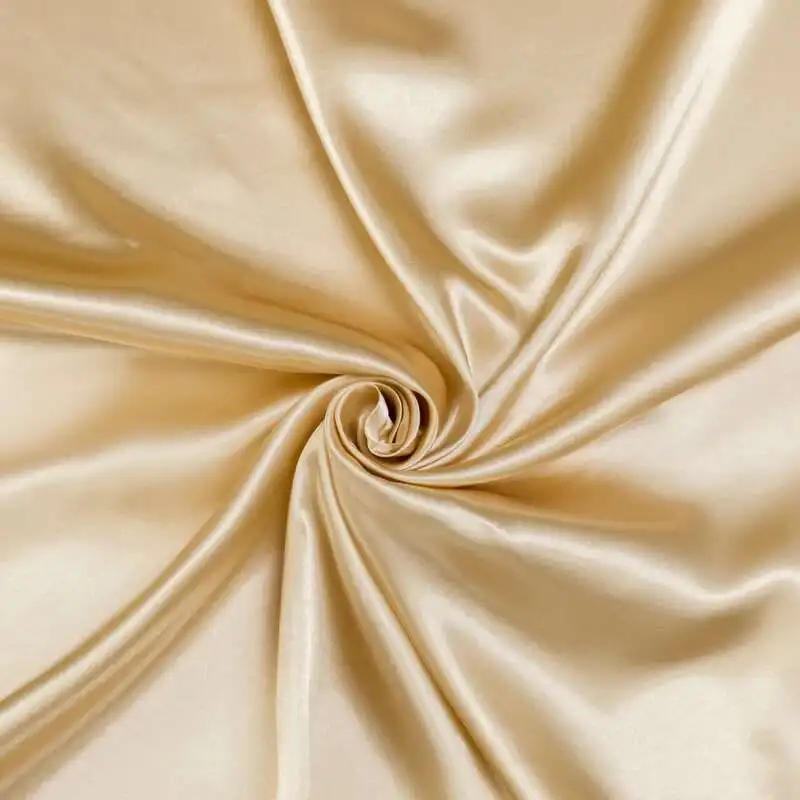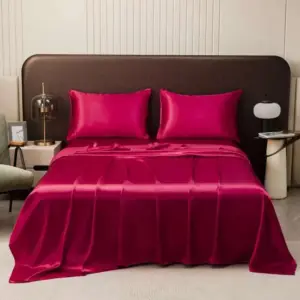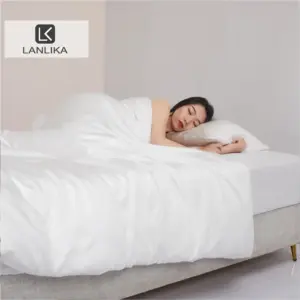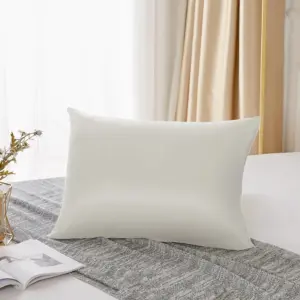Introduction: Understanding Natural Fabrics
When it comes to natural fabrics that stand the test of time, silk and cotton reign supreme in the textile world. These premium natural fibers have clothed and comforted humanity for thousands of years, each bringing its own distinct set of characteristics to our lives. Whether you’re selecting bedding, clothing, or accessories, understanding the fundamental differences between these materials can significantly impact your comfort, health, and satisfaction with your purchase.
Silk’s story begins in ancient China around 6000 years ago, where it was so valued that it gave its name to the famous trade route – the Silk Road. Cotton, meanwhile, has been cultivated across multiple civilizations for over 7000 years, becoming the world’s most widely used natural fiber, accounting for about 25% of all textile use globally.
At Sanctuary Soft, we recognize the importance of fabric education in helping customers make choices that align with their needs and preferences. The differences between silk and cotton extend far beyond mere aesthetics – they influence durability, comfort, maintenance requirements, and even your health. The amazing benefits of mulberry silk sheets become apparent when you understand these distinctive properties.
This comprehensive comparison guide will explore every aspect of these remarkable natural fibers, from their origins to their practical applications, helping you make informed decisions about which fabric best suits your specific needs.
Origin and Composition: Nature’s Distinct Creations
Cotton: The Plant-Based Wonder
Cotton emerges from nature as a soft, fluffy staple fiber that grows around the seeds of cotton plants. Botanically speaking, these fibers are almost pure cellulose – the same substance that makes up plant cell walls. The cotton plant produces bolls, which burst open when mature to reveal the characteristic white, fluffy cotton fibers we recognize.
At a molecular level, cotton consists of cellulose chains arranged in a twisted, ribbon-like structure, giving it both strength and flexibility. These natural cellulose fibers also contain small amounts of waxes, pectins, and proteins that affect its properties. The hollow structure of cotton fibers is key to its remarkable absorbency.
Silk: The Animal-Based Luxury
Silk, by contrast, is an animal protein fiber produced primarily by the larvae of Bombyx mori silkworms. These specialized caterpillars feed exclusively on mulberry leaves and produce silk to form their protective cocoons during metamorphosis. What makes mulberry silk special is this precise diet and the resulting quality of silk produced.
The silkworm secretes two proteins – fibroin (the core structural protein) and sericin (a sticky protein that binds the fibers). Silk’s remarkable properties stem from its amino acid composition and protein structure. These proteins form highly organized, crystalline structures that create silk’s incredible strength, while maintaining flexibility and luster.
This fundamental difference – plant cellulose versus animal protein – explains nearly every performance difference between these two fabrics. Their distinct molecular structures determine everything from how they feel against your skin to how they respond to washing and wear over time.
Texture and Feel: Sensory Experiences Compared
The moment you touch silk, its unmistakable smooth texture tells a story of luxury. Silk drapes with a liquid-like quality, moving with an elegant flow that few other fabrics can match. Its natural protein fibers create an incredibly smooth surface that feels almost frictionless against skin. Premium Mulberry silk in the 19-25 momme weight range (momme being the traditional measure of silk density) delivers the perfect balance of substantial feel and fluid movement.
Cotton presents a different but equally appealing tactile experience. Its soft yet structured feel provides comfortable familiarity. While not as inherently smooth as silk, high-quality cotton with longer staple fibers (like Egyptian or Pima varieties) can achieve remarkable softness. Cotton’s feel varies dramatically based on its weave – from crisp percale to silky sateen to fluffy flannel.
With repeated washing and use, these fabrics age differently. Cotton typically softens over time, becoming increasingly comfortable, though it may gradually lose some structure. Silk, when properly cared for, maintains its distinctive smoothness but may eventually lose some of its original luster. The differences between silk and cotton pillowcases become particularly noticeable when considering their effects on hair – silk’s smooth surface creates significantly less friction.
Temperature Regulation: Natural Climate Control
One of silk’s most remarkable properties is its natural thermoregulation capability. This protein-based fabric adapts to your body’s needs – cooling when you’re warm and providing insulation when you’re cold. This seemingly contradictory behavior stems from silk’s protein structure, which efficiently manages both heat and moisture.
Cotton excels in breathability through its natural fiber structure. The hollow core of cotton fibers allows for exceptional air circulation and heat dissipation. However, cotton lacks silk’s dual-regulation properties – it’s excellent for keeping cool but less effective at providing warmth in colder conditions.
For hot sleepers, cotton’s superior air permeability makes it a traditional favorite, though it can become problematic when wet with perspiration. Silk’s ability to wick moisture while maintaining temperature balance makes it surprisingly effective for both hot and cold sleepers. Silk bedding’s temperature regulation capabilities become particularly valuable for couples with different temperature preferences sharing a bed.
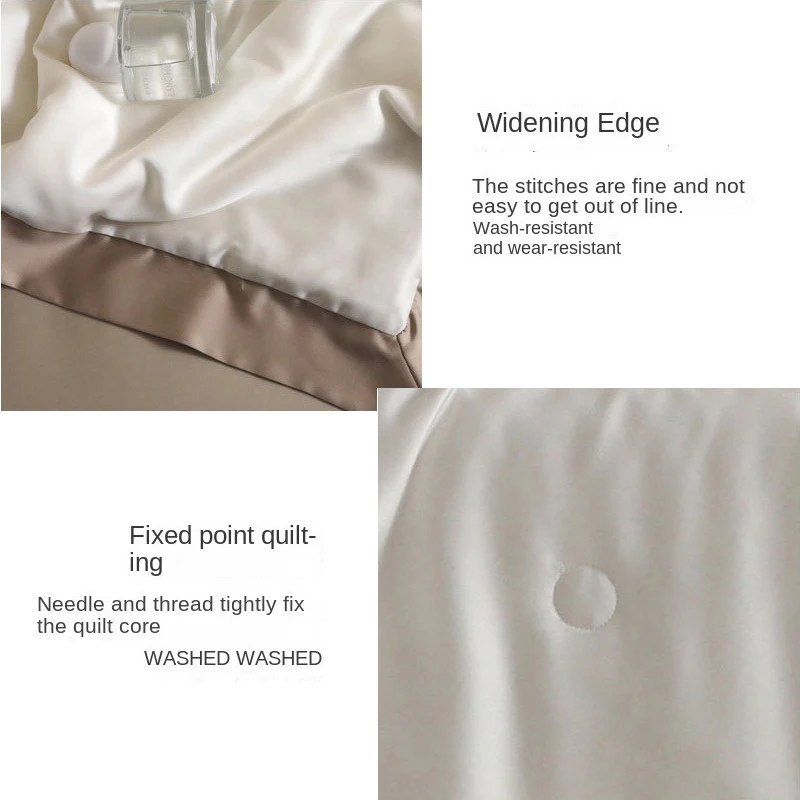
Scientific testing has shown silk maintains a more consistent microclimate between the fabric and skin across varying ambient temperatures, making it adaptable to seasonal changes. Cotton performs best in maintaining cooler temperatures in warm conditions but requires layering for colder environments.
Moisture Management: Absorption vs. Wicking
Cotton and silk handle moisture in fundamentally different ways, directly impacting comfort during extended wear or use. Cotton is exceptionally absorbent – capable of holding up to 25% of its weight in water without feeling wet. This remarkable absorbency makes cotton excellent for towels and everyday garments but creates challenges for prolonged skin contact.
When cotton absorbs moisture, it holds it close to the skin, potentially creating a damp environment that can feel uncomfortable over time. This high absorbency also means cotton takes longer to dry after becoming wet.
Silk approaches moisture management differently. While moderately absorbent (absorbing up to 30% of its weight without feeling wet), silk excels at moisture wicking – drawing moisture away from the skin and allowing it to evaporate quickly. This creates a more stable microclimate against the skin.
The protein structure of silk contains amino acids that interact with moisture in a way that maintains some natural hydration. This quality makes mulberry silk bedding beneficial for skin health, helping to maintain natural moisture levels rather than drawing oils and hydration away from skin and hair. The result is less skin dryness and better hair condition after a night’s sleep compared to more aggressively absorbent cotton.
Durability and Strength: Longevity Factors
Silk presents a fascinating paradox in the textile world – it’s simultaneously the strongest natural fiber by weight (stronger than steel of the same diameter) yet requires gentle handling to preserve its quality. Its exceptional tensile strength comes from the highly organized protein structure, featuring strong hydrogen bonds between amino acid chains.
Despite this impressive strength, silk’s susceptibility to damage from harsh chemicals, rough handling, and prolonged sun exposure requires thoughtful care. With proper maintenance, however, 100% silk sheets can last for many years, often becoming family heirlooms.
Cotton brings legendary durability to everyday use. Unlike silk, cotton actually becomes stronger when wet, making it exceptionally durable through repeated washing. Its cellulose structure provides natural resistance to abrasion, allowing cotton items to withstand regular use for years. Standard cotton items typically maintain their integrity through hundreds of wash cycles before showing significant wear.
The primary factors affecting longevity for both fabrics include:
- Exposure to direct sunlight (more damaging to silk)
- Contact with harsh chemicals (both affected, silk more severely)
- Washing techniques (gentle hand washing extends silk life significantly)
- Storage conditions (both benefit from cool, dry environments)
With proper care, premium silk products typically last 5-10 years, while quality cotton can remain serviceable for a similar timeframe, though with gradual changes in appearance and feel.
Hypoallergenic Properties: Skin Sensitivity Factors
For those with sensitive skin or allergies, fabric choice becomes particularly important. Silk offers natural hypoallergenic properties that make it an excellent choice for sensitive individuals. Its protein structure creates an inhospitable environment for common allergens like dust mites, which thrive in many other fabrics. Additionally, silk contains sericin, a protein that naturally resists mold, mildew, and fungal growth.
Perhaps most importantly, silk’s exceptionally smooth fiber structure means less mechanical irritation against the skin. This quality makes mulberry silk sheets especially beneficial for sensitive skin, including those with eczema, psoriasis, or dermatitis. Research has shown reduced symptoms in some skin conditions when switching from cotton to silk pillowcases and bedding.
Cotton, while generally well-tolerated, lacks these natural resistances to allergens. Its absorbent nature can actually create an environment where dust mites thrive if not regularly cleaned. However, cotton is easily washable at high temperatures, which helps eliminate allergens effectively. For many people without specific sensitivities, properly maintained cotton presents few issues.
The key difference lies in silk’s inherent resistance versus cotton’s cleanability. Silk naturally repels what cotton might harbor but requires removal through washing. This distinction becomes especially important for bedding, where we spend approximately one-third of our lives in direct contact with the fabric.
Care and Maintenance: Preserving Your Investment
Silk Care Essentials
Silk’s delicate nature requires specific care to maintain its quality:
- Hand washing is ideal, using pH-neutral cleaners specifically designed for silk
- If machine washing, use a mesh laundry bag and delicate cycle with cold water
- Never use bleach or enzymes, which break down silk proteins
- Avoid direct sunlight when drying
- Iron on low heat (silk setting) with a pressing cloth between the iron and silk
- Store in breathable cloth bags rather than plastic
Cotton Care Basics
Cotton’s robustness allows for more straightforward care:
- Machine washable in warm water for most items
- Can withstand higher temperatures for sanitization when needed
- Tumble dry on medium heat (high heat can cause shrinkage)
- Iron at higher temperatures than silk (cotton setting)
- Store in dry conditions to prevent mildew
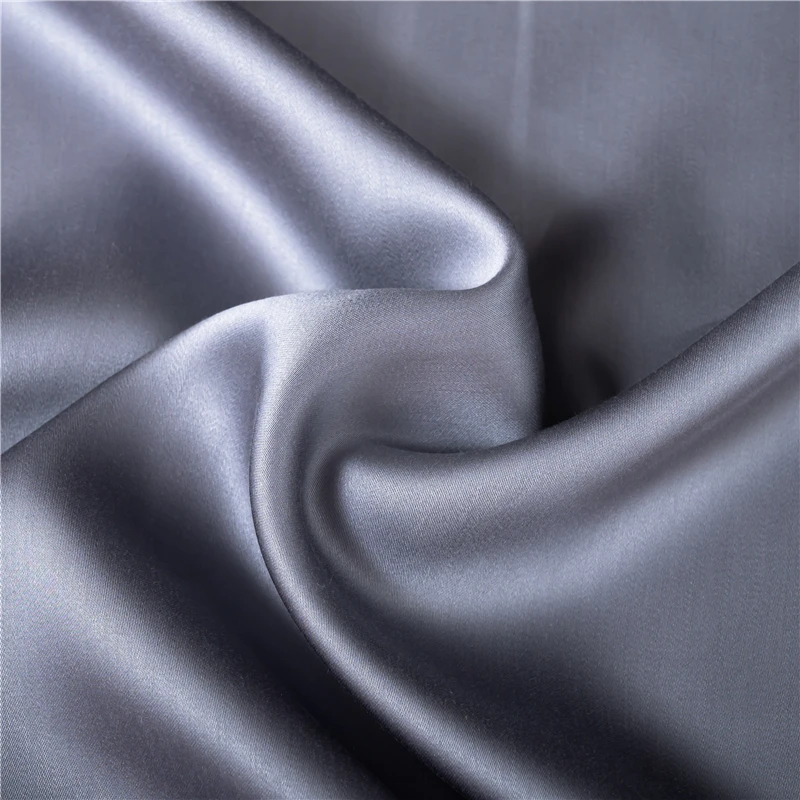
Common care mistakes to avoid with silk include using standard detergents (too alkaline), wringing or twisting wet silk, and exposing it to prolonged sunlight. For cotton, avoiding overcrowding in the washer and excessive heat in the dryer helps maintain fiber integrity.
For those seeking easier maintenance without sacrificing quality, washable silk sheets offer a practical compromise, featuring specially treated silk that withstands machine washing while retaining most of silk’s beneficial properties.
Environmental Impact: Sustainability Considerations
The environmental footprints of silk and cotton differ significantly throughout their production lifecycles.
Cotton’s cultivation is notably water-intensive, requiring approximately 10,000 liters of water to produce one kilogram of conventional cotton. Additionally, traditional cotton farming uses about 16% of the world’s insecticides despite occupying just 2.5% of agricultural land. These environmental challenges have led to the growth of organic cotton, which eliminates synthetic pesticides and reduces water usage through more sustainable farming practices.
Silk production presents its own environmental considerations. Traditional silk production involves boiling cocoons with the silkworms inside, raising ethical concerns. However, its water footprint is substantially lower than cotton’s, and the mulberry trees that feed silkworms require relatively few pesticides. Alternative approaches like peace silk (ahimsa silk) allow the moth to emerge before harvesting the cocoon, addressing ethical concerns at the cost of shorter, less uniform fibers.
Both materials offer environmental advantages at end-of-life: being natural fibers, they’re biodegradable. Cotton typically decomposes in 1-5 months under proper conditions, while silk may take 1-2 years due to its protein structure.
For consumers seeking eco-friendly alternatives with similar benefits to traditional silk, bamboo silk sheets offer a plant-based option with reduced environmental impact while providing a silky feel and temperature-regulating properties.
Best Use Cases: Matching Fabrics to Needs
Bedding Applications
Silk excels in specific bedding scenarios:
– Pillowcases for hair protection (reducing breakage and frizz)
– Sheets for temperature regulation and skin health
– Duvet covers for year-round comfort
– Ideal for menopausal night sweats due to moisture management
Cotton performs best in:
– Everyday sheets for durability and easy maintenance
– Children’s bedding that requires frequent washing
– Guest room setups for universal comfort
– Hot, humid climates where maximum breathability is essential
Clothing Considerations
Silk’s strengths in apparel include:
– Lightweight undergarments that reduce friction
– Luxurious blouses and dresses with elegant drape
– Scarves and accessories that feel luxurious against skin
– Cool-weather base layers that insulate without bulk
Cotton shines in:
– Everyday t-shirts, jeans, and casual wear
– Workout clothes that need frequent washing
– Summer garments for hot weather comfort
– Children’s clothing that faces frequent staining
For specialized needs, the complete guide to mulberry silk bed sheets provides detailed information on matching specific silk products to particular requirements, from thread count to weave patterns that optimize different benefits.
The perfect solution often involves strategically combining both fabrics – silk pillowcases paired with cotton sheets, or silk summer sheets with cotton winter flannel – allowing you to maximize the benefits of each material according to seasonal needs and specific use cases.
Silk Fabric: Advantages and Limitations
Advantages of Silk
- Exceptional smoothness that reduces friction on skin and hair
- Natural temperature regulation for year-round comfort
- Hypoallergenic properties that benefit sensitive skin
- Moisture-balancing capability that maintains skin hydration
- Luxurious appearance with natural sheen
- Lightweight strength that provides durability without bulk
- Naturally resistant to dust mites and mold
- Contains amino acids beneficial to skin and hair
Limitations of Silk
- Higher initial investment compared to most cotton products
- Requires more delicate care and specific cleaning methods
- More susceptible to water staining and sun damage
- Not ideal for high-friction applications
- Special detergents recommended for maintenance
- Can show wear patterns in high-use areas over time
Sanctuary Soft’s premium mulberry silk pillowcases demonstrate these advantages in practice, offering 19-25 momme weight silk that balances luxury with practical durability, particularly benefiting hair health and facial skin by reducing friction during sleep.
Cotton Fabric: Advantages and Limitations
Advantages of Cotton
- Exceptional breathability for hot weather comfort
- Outstanding durability, especially when wet
- Easy care with standard washing machines and detergents
- Generally more affordable initial purchase
- Versatile performance across many applications
- Becomes softer with repeated washing
- Holds up well to regular use
- Easily sanitized with hot water washing
Limitations of Cotton
- Wrinkles more easily than many fabrics
- Absorbs and retains moisture, potentially feeling damp
- Can harbor allergens if not frequently washed
- May shrink if improperly dried
- Less effective insulation in cold weather
- Requires more frequent washing than silk
- Can transfer moisture away from skin, leading to dryness
- Heavier when wet, with longer drying times
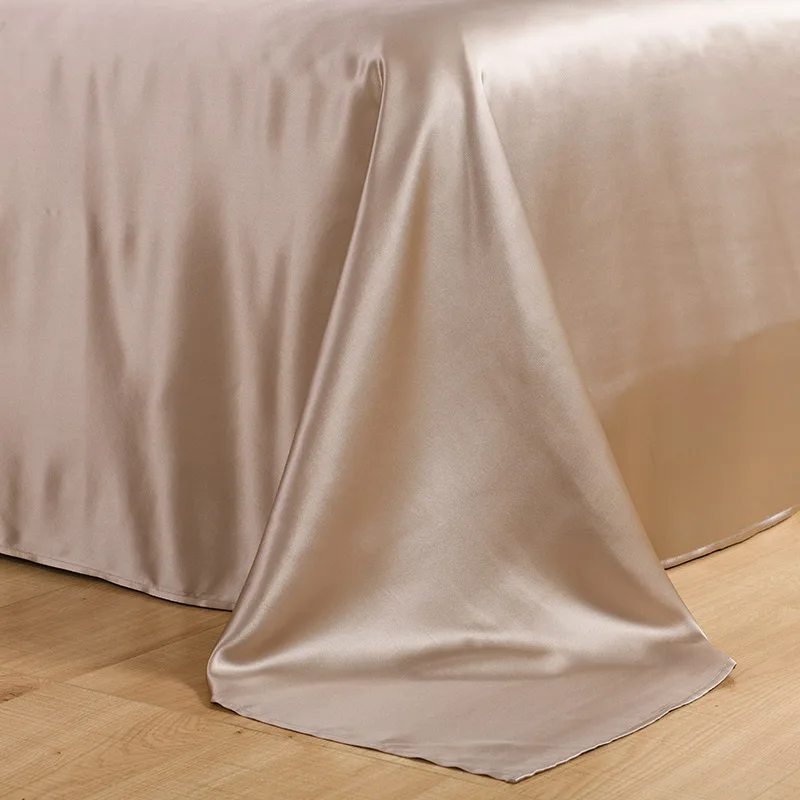
For those seeking the temperature regulation benefits of silk with the durability advantages of cotton, cooling silk sheets offer specialized construction that maximizes breathability while maintaining silk’s characteristic smoothness.
Full-size Silk Sheets, King Size Silk Sheets, Queen Size Silk Sheets, Twin Size Silk Sheets, Washable Silk Sheets
Price range: $95.95 through $178.37 Select options This product has multiple variants. The options may be chosen on the product page100% Silk Sheets, Green Silk Sheets, King Size Silk Bedding Set, Mulberry Silk Bedding Sets, Queen Size Silk Bedding Set
Price range: $1,246.21 through $1,615.22 Select options This product has multiple variants. The options may be chosen on the product pageBamboo Silk Sheets, Cooling Silk Sheets
Price range: $130.76 through $177.80 Select options This product has multiple variants. The options may be chosen on the product page100% Silk Sheets, King Size Silk Bedding Set, Mulberry Silk Bedding Sets, Queen Size Silk Bedding Set, White Silk Sheets
Price range: $1,000.79 through $1,351.42 Select options This product has multiple variants. The options may be chosen on the product pageBamboo Silk Sheets, Queen Size Silk Fitted Sheet
Price range: $230.24 through $297.88 Select options This product has multiple variants. The options may be chosen on the product pageKing Size Silk Pillowcases, Mulberry Silk Pillowcases, Queen Size Silk Pillowcases
Price range: $94.96 through $121.56 Select options This product has multiple variants. The options may be chosen on the product page
Making Your Decision: Personal Factors to Consider
When deciding between silk and cotton, several personal factors should guide your choice:
Budget Considerations: While silk typically requires a higher initial investment, its longevity and benefits may provide better long-term value for certain applications. Consider where you’ll receive the most benefit from silk’s unique properties versus where cotton’s practicality makes more sense.
Climate and Sleeping Preferences: Your local climate and personal temperature regulation needs significantly impact which fabric will serve you best. Hot sleepers in humid environments might prioritize cotton’s breathability, while those dealing with temperature fluctuations might benefit from silk’s adaptive properties.
Maintenance Commitment: Be realistic about your willingness to follow special care instructions. If convenience is paramount, cotton or specialized washable silk options may better fit your lifestyle than traditional silk requiring hand washing.
Specific Health Considerations: For those with allergies, skin sensitivities, or hair concerns, silk’s hypoallergenic properties and reduced friction may justify its premium price, particularly for pillowcases and items in direct contact with skin.
Many consumers find that a hybrid approach works best – using silk bedding instead of cotton sheets for pillowcases and upper layers, while using cotton for fitted sheets and items requiring frequent washing. This strategy maximizes the benefits of both fabrics while working within practical constraints of care and budget.
Frequently Asked Questions
Is silk or cotton better for sensitive skin?
Silk is generally better for sensitive skin due to its smooth fiber structure that creates less friction and natural hypoallergenic properties. Its protein composition doesn’t strip natural oils from skin, while cotton, though breathable, can sometimes irritate through mechanical friction and moisture absorption.
Which fabric is more durable, silk or cotton?
Cotton typically offers better durability in everyday use situations requiring frequent washing, while silk provides better tensile strength but requires gentler handling. With proper care, both fabrics can last many years, but cotton generally withstands rougher treatment.
Is silk or cotton cooler to sleep on?
For immediate cooling sensation, high-quality cotton often feels cooler initially. However, silk provides better temperature regulation throughout the night. Cotton excels at breathability and initial moisture absorption, while silk better manages both heat retention and release as conditions change.
Can I wash silk and cotton the same way?
No. Cotton can typically withstand standard machine washing with regular detergents and warmer temperatures. Silk requires gentler treatment—ideally hand washing with pH-neutral cleaners, or machine washing on delicate cycles in cold water with specialized detergents.
Why is silk more expensive than cotton?
Silk’s higher price reflects its more complex production process—silkworms must be carefully raised on mulberry leaves, and each cocoon produces relatively little usable fiber. The harvesting and processing of silk is also more labor-intensive than cotton production, which benefits from extensive mechanization.
Which fabric wrinkles less, silk or cotton?
Silk naturally resists wrinkles better than cotton due to its protein structure and natural elasticity. Cotton, particularly in lighter weights, wrinkles easily and often requires ironing to maintain a crisp appearance, while silk typically recovers from folding with minimal intervention.
Are there vegan alternatives to silk with similar benefits?
Yes, plant-based alternatives like bamboo-derived fabrics and specialized rayon blends offer some of silk’s benefits without animal products. These natural silk alternatives provide similar smoothness and temperature regulation, though they may not exactly replicate all of silk’s unique properties.

